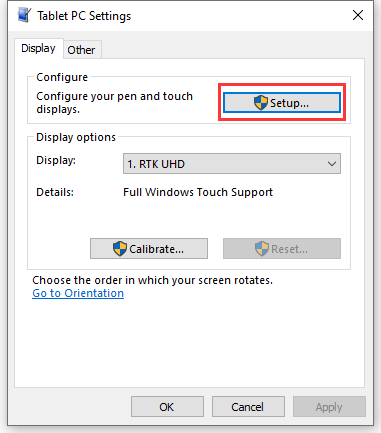3.4inch 800x800 LCD
Features
- 3.4-inch IPS touch display with a hardware resolution of 800 x 800.
- 10-point touch control, toughened glass panel with up to 6H hardness.
- Adopts optical bonding technique for better display.
- When working with Raspberry Pi, supports Raspberry Pi OS, Ubuntu, Kali, and Retropie systems.
- When working with Windows PC, support Windows 11/10/8.1/8/7.
- Support HDMI audio output with onboard 3.5mm headphone jack and 4PIN speaker.
Parameters
| Item | Description | Unit |
|---|---|---|
| Model | 5inch 1080x1080 LCD | / |
| Dimensions | 5.0 | Inch |
| Viewing Angle | 160 | Deg |
| Resolution | 1080 x 1080 | Pixels |
| Overall Dimensions | 150.00(H)×150.00(V)×7.00(D) | mm |
| Display Area | 127.60(H)×127.60(V) | mm |
| Pixel Pitch | 0.1176(H) x 0.1176(V) | mm |
| Color Gamut | 70% | NTSC |
| Max. Brightness | 300 | cd/m² |
| Contrast | 1300:1 | / |
| Backlight Adjustment | Key Dimming | / |
| Refreshing Rate | 60 | Hz |
| Display Interface | Standard HDMI Interface | / |
| Power Port | 5V Type-C | / |
| Power Consumption | 2 | Watt |
| Weight | 381 | g |
Electrical Parameters
| Parameter | Min. Value | Standard Value | Max. Value | Unit | Note |
|---|---|---|---|---|---|
| Input Voltage | 4.75 | 5.00 | 5.25 | V | Note 1 |
| Input Current | 300 | 400 | TBD | mA | Note 2 |
| Operating Temperature | 0 | 25 | 60 | ℃ | Note 3 |
| Storage Temperature | 0 | 25 | 70 | ℃ | Note 3 |
•Note 1: Input voltage exceeding the maximum value or improper operation may cause permanent damage to the device.
•Note 2: The input current should be ≥300mA, otherwise it will lead to start-up failure or abnormal display, and a long time in an abnormal state may cause permanent damage to the device.
•Note 3: Please do not put the display in a high temperature and high humidity storage environment for a long time, the display needs to work within the limit value, otherwise it will be possible to damage the display.
EDID Sequence Parameters
If the system of the main control board can automatically identify the EDID for display, there is no need to set the relevant timing parameters additionally.
Otherwise, you can refer to the following EDID settings:
| Pixel Clock | H Adressable | H Blanking | V Adressable | V Blanking | H Front Porch | H Sync Width | V Front Porch | V Sync Width | H Image Size | V Image Size | H Border | V Border |
|---|---|---|---|---|---|---|---|---|---|---|---|---|
| 74.25 | 800 | 654 | 800 | 48 | 218 | 218 | 16 | 16 | 0 | 0 | 0 | 0 |
Onboard Interface
User Guide
Working with Raspberry Pi
Hardware Connection
- Connect the Touch port to the USB connector of the Raspberry Pi.
- Connect the HDMI interface to the HDMI interface of the Raspberry Pi.
Software Setting
Raspberry Pi OS / Ubuntu / Kali and Retropie systems are supported for Raspberry Pi. When the LCD works on these systems of Raspberry Pi, the resolution must be set manually, otherwise, it will result in incorrect display resolution and affect the experience.
Please download the newest image from the Official Raspberry Pi website.
Download the compressed file on the PC and unzip it to get the .img file.
Connect the TF card to the PC and use SDFormatter to format the TF card.
Open Win32DiskImager, choose the image prepared in the first step, and click "Write" to program the system image.
After programming, open the config.txt file in the root directory of the TF card and enter the following codes at the end of config.txt. Then, save and safely eject the TF card.
hdmi_group=2 hdmi_mode=87 hdmi_force_hotplug=1 hdmi_timings=800 0 218 218 218 800 0 16 16 16 0 0 0 60 0 74250000 0 hdmi_drive=2
6. Insert the TF card into the Raspberry Pi, power up the Raspberry Pi, wait for a few seconds normally and then it will display normally. Due to the circular screen feature, it is recommended to use the Raspberry Pi remote login tutorial for power-on setup.
Working with PC
Support Windows 11/10/8/8.1/7
How to Use
- Connect the Touch interface of the LCD to the USB interface of the PC, and Windows will automatically recognize the touch function.
- Connect the LCD's HDMI interface to the PC's HDMI interface, and Windows will automatically recognize the display function.
- Note:
- Some PCs do not support HDMI devices plug-and-play, generally after rebooting the system can be used normally.
- If the power supply of the USB interface is insufficient, the LCD will flicker, after connecting the external 5V 1A power adapter to the LCD's Power interface, it can be restored to normal use.
Windows Touch Calibration
Take Windows 10 as an example:
- 1. Enter the Windows setting of the system, type in the search bar, and click "Calibrate the screen for pen or touch input" (as shown in the picture below):
- 2. Click "Setup" in the pop-up "Tablet PC Settings" interface:
- 3. The following text prompt will appear on the screen. Please tap the touch screen with your finger, and the computer will recognize it as a touch screen.
Outline Dimensions
Resource
3D Drawing
Support
Technical Support
If you need technical support or have any feedback/review, please click the Submit Now button to submit a ticket, Our support team will check and reply to you within 1 to 2 working days. Please be patient as we make every effort to help you to resolve the issue.
Working Time: 9 AM - 6 AM GMT+8 (Monday to Friday)





